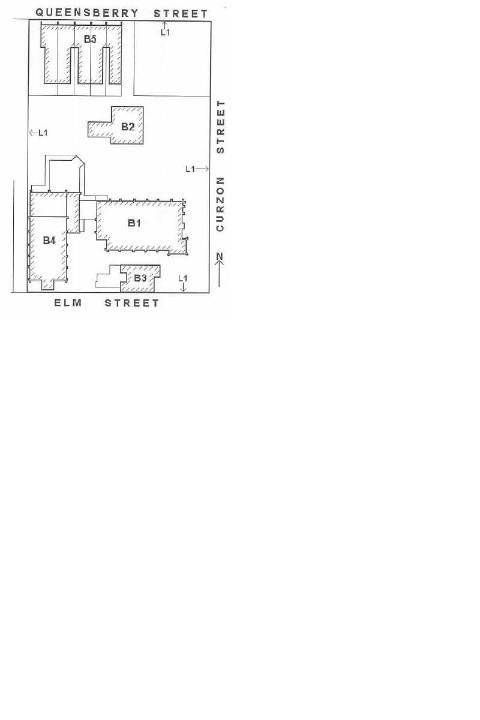| Back to search results » | Back to search page » |
|
FORMER PRESBYTERIAN UNION MEMORIAL CHURCH COMPLEX
Other NamesHOTHAM MISSION , HOTHAM PARISH UNITING CHURCH , ST MARKS CHURCH Location49-61 CURZON STREET AND 2-22 ELM STREET AND 579-589 QUEENSBERRY STREET NORTH MELBOURNE, MELBOURNE CITY
File Number09/004644-01LevelRegistered |
|
Statement of Significance
What is significant?
The North Melbourne Presbyterian Church was founded in 1854, the opening services being held on 29 October. On this land an iron school room donated by the denominational schools board was erected in 1855. The United Presbyterian Church of Victoria was formed in 1859 from three separate Presbyterian movements. Shortly after the foundation stone of a new bluestone church was laid and worship moved there from the adjacent iron building in November 1859, when the church was completed. The designer for the church was John Donaldson and it was built by Thomas Cattanach & Co. In 1867 tenders were called for a manse and it was constructed in 1868. During the 1870s the bluestone church was found to be too small and it was resolved to build a new one with a spire. Competitive designs were called and that of architect Evander McIver was chosen from the thirteen submitted. Contractor James Thurgood's tender was accepted and the old church was pulled down to make way for the present building. The new church was completed in 1879. At this time the Church Hall was built behind the church out of the materials from the old church. Half of the original land grant was sold to offset some of the debts of the congregation and cottages were also built on Queensberry Street to provide revenue from their rental. Five cottages remain of eight, which were constructed on the Union Memorial Church site. Four of the cottages were constructed in 1911, designed by Inskip and Kemp and built by Messrs F&W Abery and a further four were constructed by builders Mather and Lydster to the same design in 1915 and adjoining the earlier cottages. The church is a di-chrome brick building in the Gothic revival style. It has an asymmetrically placed brick tower and stuccoed spire. Internally the church has a gallery supported on cast iron columns with decorative cast iron panel railing. Local craftsmen Ferguson and Urie made the stained glass windows. The church hall is built out of the bluestone and rubble of the old 1859 church. It is also in the Gothic Revival style and has an attached porch and bellcote. Stucco has been applied since its reconstruction. It has large decorative exposed timber trusses on the interior. The manse is a two-storey stuccoed brick residence with a hipped slate roof and corniced chimneys. The parsonage is a polychrome brick, single storey double-fronted cottage in a typical asymmetrical, gabled ecclesiastical mode. Decorative details include fretted bargeboards and a cast iron verandah. The cottages are designed in a low-key Federation Queen Anne style. They are redbrick and originally had four rooms. The front verandahs, which face directly onto the street, have timber fretwork and railing.
How is it significant?
The Union Memorial Church Complex is of historical, social, architectural and aesthetic significance to the State of Victoria.
Why is it significant?
The Union Memorial Church Complex is of historical importance as a rare surviving example of an intact church complex built in the nineteenth and early twentieth century and including, church, manse, hall, parsonage and cottages. With its complex of buildings it is of social importance for its demonstration of the needs and operations of the Presbyterian Church since the 1860s. The construction of cottages on the site clearly demonstrates the practice of church organisations seeking revenue opportunities through property investment. Early examples of this rarely remain part of the original church complex.
The Union Memorial Church building is of architectural importance as it epitomises a substantial Presbyterian church built in the latter half of the nineteenth century with its galleries on three sides. The nature of the meeting-house type of interior used by the Congregationalists, Methodists and Presbyterians can be fully appreciated in this church. This church is probably architect Evander McIver's best surviving work. The di-chrome brickwork, interior gallery, stairs and stained glass are just four of the notable features. The church hall is of architectural significance for the notable large exposed timber trusses. The spire and imposing exterior of the church along with the intact manse, rear hall, parsonage and cottages results in a complex of aesthetic significance, which is a landmark in North Melbourne.
Group
Religion
Category
Church












